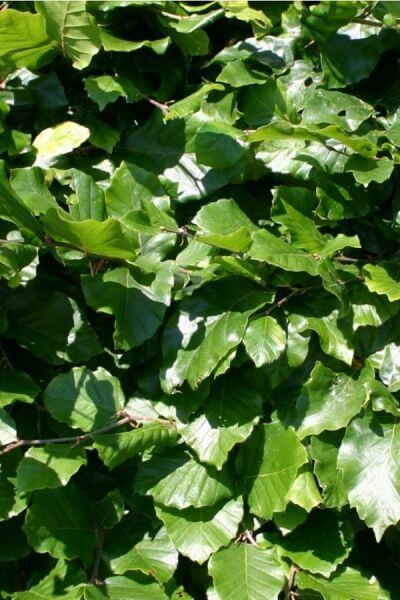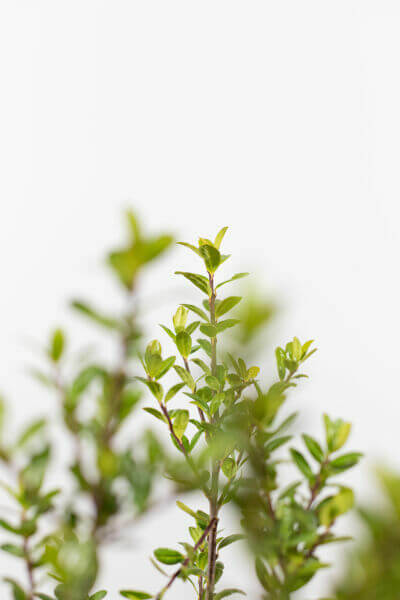Hedge Plants For Beautiful Borders
Hedge Plants For Beautiful Borders
Blog Article
Best Hedge Plants For Privacy
Improve your garden's attraction with lavish hedge ranges such as Yew (Taxus), Thuja, Laurel, Photinia, and Bamboo, celebrated for their structural integrity and ecological advantages.
Yew and Thuja provide evergreen protection and winter durability, while Laurel provides rapid growth and broad, fragrant leaves.
Photinia adds seasonal appeal with its dynamic red foliage, and Bamboo lends a low-maintenance, peaceful ambiance.
These hedges improve air quality, reduce sound, and develop tranquil, personal spaces.
Proper planting, spacing, and upkeep ensure vigorous development and eco-friendly harmony.
Explore how these lush ranges can elevate your garden's appeal and well-being.
Key Takeaways
Change Your Garden With Lush Hedge Ranges
- Select Yew for its thick, evergreen growth and unrivaled durability.
- Opt for Laurel for its fast growth and broad leaves, making sure quick privacy.
- Select Photinia for its lively seasonal foliage, which turns a striking dark red.
- Utilize Bamboo for a low-maintenance, winter-hardy hedge with aesthetic appeal.
- Space plants 2-3 per meter and prune frequently for optimum development and health.
Popular Hedge Plants
When changing a garden with lush hedge varieties, it's necessary to think about popular hedge plants such as Yew, Thuja, Laurel, and Photinia due to their distinct attributes and benefits.
Yew (Taxus) is extremely respected for its durability and thick, green development, making it a prime option for withstanding landscapes.
Thuja is noted for its evergreen foliage and robust winter resilience.
Photinia adds seasonal vibrancy with red leaves that darken in time, creating dynamic visual appeal.
Laurel offers quick development and aromatic, broad leaves, suitable for quick privacy.
Additionally, Bamboo is an exceptional choice for ambiance, offering a low-maintenance, winter-hardy option that boosts the garden's visual with its classy, swaying canes.
These selections cater to a variety of horticultural requirements and choices.
Benefits of Garden Hedges
Garden hedges offer a multitude of advantages, making them a valuable addition to any landscape. These natural barriers are cost-effective to carry out and offer significant wind protection, boosting air flow and contributing to sound reduction. The thick foliage of hedges like Thuja and Beech guarantees privacy by blocking visibility, developing a peaceful and secluded environment.
Hedges likewise play an important role in microclimate guideline, providing a steady environment that fosters plant development and reduces temperature level variations. Their complex leaf structures filter pollutants, enhancing air quality and contributing to a much healthier garden community.
Additionally, hedges master sound reduction, taking in and deflecting acoustic waves to lower ambient noise levels. This double performance of offering both acoustic and visual privacy improves the overall serenity and visual appeal of any garden.
Planting and Maintenance Tips
For a successful hedge, careful preparation of the planting area is essential. Make sure the soil has appropriate pH and drainage to support strong root advancement.
Space the plants properly for the selected species. Water the hedge regularly during its initial development phase, adjusting as required with seasonal changes.
Execute a organized pest control and disease avoidance method, using chemical or natural treatments when essential. Regularly inspect for aphids, mites, and fungal infections.
Apply mulch to retain wetness and reduce weeds. Seasonal pruning promotes thick development and air circulation, important for plant health.
Following these guidelines will help you cultivate a dynamic, properly maintained hedge that enhances the beauty of your garden.
Spacing and Trimming Guidelines
Spacing and Trimming Guidelines
Proper spacing and trimming are crucial for cultivating healthy, visually appealing hedges. Sufficient spacing guarantees each plant gets adequate nutrients, light, and air flow.
Follow these standards for ideal hedge maintenance:
- Spacing: Position hedge plants 2-3 plants per meter to motivate robust growth.
- Pruning Methods: Regular pruning is important for preserving preferred hedge height and shape. Trim new development in summer season and cut down older wood throughout winter.
- Seasonal Care: Adjust trimming schedules and methods according to seasonal requirements to make sure plant health.
- Hedge Height: Routinely screen and trim to keep the wanted hedge height and accomplish uniform aesthetics.
Sticking to these steps will guarantee your hedge grows, enhancing both the appeal and performance of your garden.
Picking the Right Hedge
Picking the Right Hedge
Selecting the suitable hedge includes evaluating factors such as mature height, foliage density, and ecological durability. Effective hedge plant selection needs comprehending each species' development attributes and site-specific adaptability.
For example, Yew (Taxus) uses excellent longevity and dense development, while Thuja is notable for its winter season resilience. Furthermore, thinking about upkeep requirements is crucial; fast-growing species like Laurel or Privet demand regular trimming, whereas low-maintenance choices like Bamboo or Ivy may be preferable for those seeking minimal upkeep.
Environmental factors such as soil type, light availability, and moisture conditions ought to also direct the selection process. This careful approach ensures the chosen hedges will thrive, providing both practical and visual advantages to the garden landscape.
Shipment and Planting Recommendations
To guarantee your hedge plants flourish, they ought to be delivered by specialized carriers and planted without delay upon arrival.
Follow these necessary actions for successful planting:
- Soil Preparation: Enrich the soil with natural matter to enhance drainage and nutrient content.
- Planting Depth: Create a trench twice the width and equivalent to the depth of the root ball.
- Watering Methods: Water thoroughly after planting, keeping the soil regularly wet however not filled.
- Mulching: Apply a layer of mulch to maintain wetness and suppress weeds.
Consumer Support and Service
Given the important role of prompt support in horticultural pursuits, our customer assistance team is readily available six days a week through telephone, e-mail, and social media to use professional advice and promptly deal with any issues. Their dedication to fast response times guarantees customer fulfillment by dealing with questions associated with plant health, optimum planting methods, and upkeep schedules.

Interaction Technique
-----------------
Within 24 hours
Email
6 days a week
This comprehensive assistance system, enhanced by a stellar 9.3/ 10 customer ranking, highlights our commitment to enhancing the gardening experience for each client.
Regularly Asked Concerns
How Long Does It Consider Hedge Plants to Establish?
Hedge plants usually need one to three years to become totally established, with the specific duration differing by species and growing conditions.
Reliable care throughout this vital duration is necessary for robust growth. Consistent watering, alert weed control, and suitable fertilizer application are pivotal in promoting strong root advancement.
For instance, fast-growing species like Laurel might establish faster, while slower-growing varieties such as Yew may take longer. Thorough maintenance accelerates the establishment process, leading to thick and healthy hedges.
What Are the very best Hedge Plants for Privacy?
The question of the very best hedge plants for personal privacy includes evaluating evergreen and deciduous choices.
Evergreen hedges like Thuja, Laurel, and Cypress supply year-round protection, making sure constant privacy.
On the other hand, deciduous hedges such as Beech use seasonal personal privacy, shedding leaves in colder months.
Key maintenance suggestions for personal privacy hedges consist of routine cutting, fertilizing in spring, and proper spacing-- usually 2 to 3 plants per meter.
Additionally, constant watering and persistent weed removal are essential for promoting healthy, dense growth.
Can Hedge Plants Draw In Wildlife to My Garden?
Yes, hedge plants can draw in wildlife to your garden by offering important benefits like shelter, food, and nesting sites, thereby enhancing regional biodiversity. For example, yew, holly, and laurel are exceptional for bring in birds, while ivy supports a range of bugs.
However, it is very important to note that there are some downsides, such as increased upkeep to manage pests and routine upkeep. Carefully picking and preserving hedge varieties can assist balance these benefits and downsides, eventually promoting a vibrant and sustainable community in your garden.
Are There Any Blooming Hedge Plants Available?
Yes, there are flowering hedge plants available that can boost the charm of your garden.
For instance, Elaeagnus, likewise called Olive Willow, produces aromatic white flowers in the fall, including a touch of beauty.
Photinia, another popular option, showcases dynamic red leaves that grow into a rich green, developing a dynamic visual result throughout the seasons.
To ensure these plants grow, it's Additional info necessary to practice correct pruning techniques and seasonal maintenance, such as cutting brand-new development in the summer and cutting back in the winter.
These procedures will assist maintain the health and visual appeal of your blooming hedges.
How Do I Prevent Bugs in My Hedge Plants?
To prevent insects in hedge plants, use natural bug control methods and maintain proper hedge care. Present useful pests like ladybugs, which take advantage of hazardous insects, to develop a well balanced environment.
Regularly check your hedges for signs of invasion and quickly get rid of any afflicted parts to avoid the spread. Make sure the health of your hedges by using well balanced fertilizers and offering appropriate water.
Utilize mulching to retain soil moisture and correct spacing to reduce plant stress and promote robust development. These practices jointly assist in lessening bug issues and preserving a healthy hedge.
Conclusion
In essence, selecting the best hedge ranges such as Yew, Thuja, and Laurel can transform any garden into a tranquil sanctuary. These plants provide year-round greenery, boost aesthetic appeal, and deal useful benefits like noise decrease and wind defense.
Correct planting techniques, precise spacing, constant watering, and seasonal trimming are essential for optimal growth.
Dependable shipment services and skilled customer support guarantee a smooth experience from purchase to planting, making it simpler than ever to elevate your outdoor space.
Garden hedges provide a multitude of benefits, making them a valuable addition to any landscape. These natural barriers are cost-efficient to implement and provide significant wind security, boosting air blood circulation and contributing to noise reduction. The dense foliage of hedges like Thuja and Beech ensures privacy by obstructing exposure, producing a remote and tranquil environment.

Pruning Methods: Regular pruning is essential for keeping preferred hedge height and shape. Trim brand-new development in summer and cut back older wood throughout winter season.
Report this page